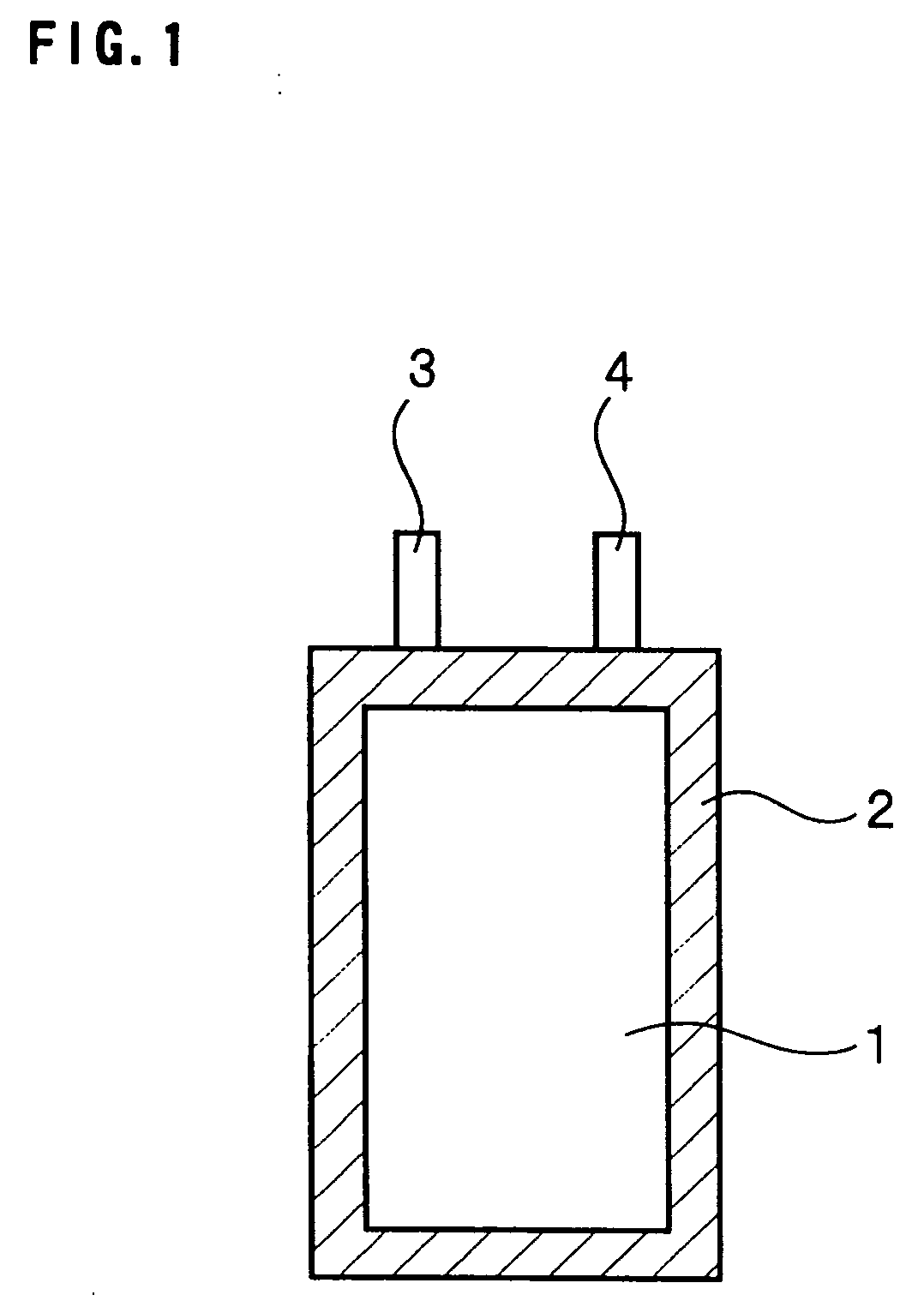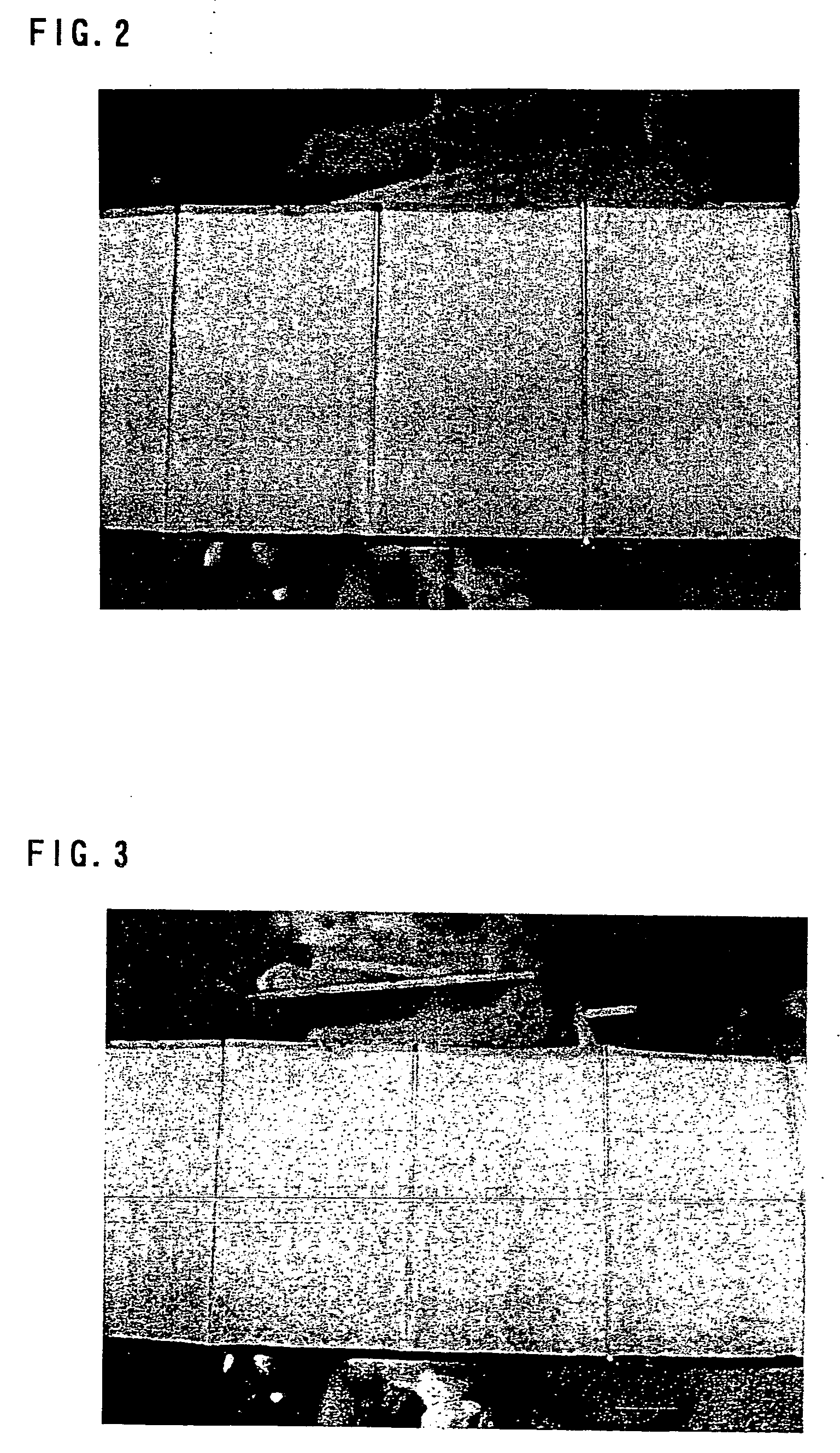Nonaqueous electrolyte secondary battery
- Summary
- Abstract
- Description
- Claims
- Application Information
AI Technical Summary
Benefits of technology
Problems solved by technology
Method used
Image
Examples
experiment 1
EXAMPLE 1
[0044] Preparation of LiMn0.33Ni0.33Co0.34O2)
[0045] LIOH and a coprecipitated hydroxide, represented by Mn0.33Ni0.33Co0.34(OH)2, were mixed in an Ishikawa automated mortar such that a molar ratio of Li to all transition metals was brought to 1:1, and then heat treated in an ambient atmosphere at 1,000° C. for 20 hours. After the heat treatment, the resultant was ground to obtain a lithium transition metal complex oxide having a mean particle diameter of about 5 μm and represented by LiMn0.33Ni0.33Co0.34O2.
[0046] (Preparation of Lithium Cobaltate (LiCoO2))
[0047] LiOH and Co(OH)2 were mixed in an Ishikawa automated mortar such that a molar ratio of Li to Co was brought to 1:1, and then heat treated in an ambient atmosphere at 1,000° C. for 20 hours. After the heat treatment, the resultant was ground to obtain LiCoO2 with a mean particle diameter of about 5 μm.
[0048] (Fabrication of Positive Electrode)
[0049] The above-obtained LiMn0.33Ni0.33Co0.34O2 and LiCoO2 in the wei...
example 2
[0057] The procedure used to fabricate the positive electrode in Example 1 was followed, except that LiMn0.33Ni0.33Co0.34O2 and LiCoO2 in the weight ratio of 7:3 were mixed, to construct a lithium secondary battery A2. The constructed battery had an initial thickness of 3.68 mm.
example 3
[0074] The procedure of Example 1 was followed, except that LiMn0.33Ni0.33Co0.34O2 and LiCoO2 in the weight ratio of 90:10 were mixed in an Ishikawa automated mortar to prepare the positive active material, to construct a lithium secondary battery A3. The constructed battery had an initial thickness of 3.66 mm.
PUM
 Login to View More
Login to View More Abstract
Description
Claims
Application Information
 Login to View More
Login to View More - R&D
- Intellectual Property
- Life Sciences
- Materials
- Tech Scout
- Unparalleled Data Quality
- Higher Quality Content
- 60% Fewer Hallucinations
Browse by: Latest US Patents, China's latest patents, Technical Efficacy Thesaurus, Application Domain, Technology Topic, Popular Technical Reports.
© 2025 PatSnap. All rights reserved.Legal|Privacy policy|Modern Slavery Act Transparency Statement|Sitemap|About US| Contact US: help@patsnap.com



